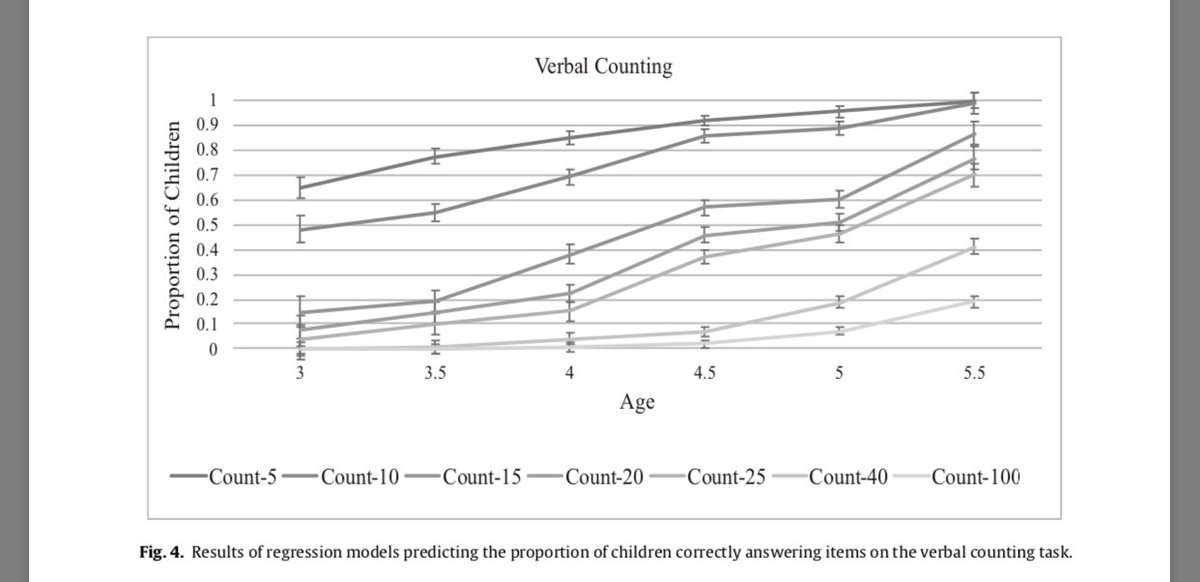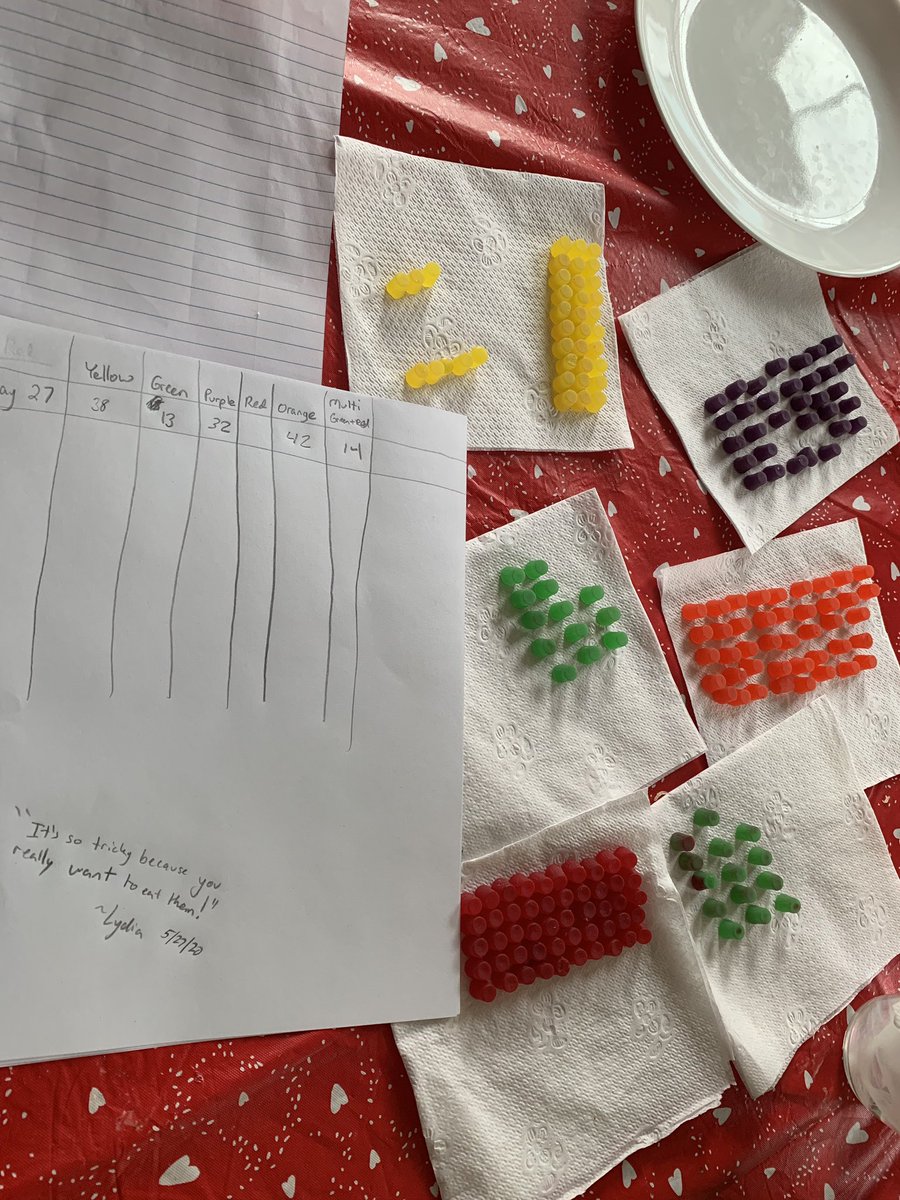Thread: Want to know what preschoolers can do mathematically? Check out our new manuscript led by @elitkow with @rjduncan5 and @jarlogan in JECP. https://pubmed.ncbi.nlm.nih.gov/32283343/ ">https://pubmed.ncbi.nlm.nih.gov/32283343/... It’s one of my new faves from @pearl_center!
Why is this important to know? And what can they do? 1/20 https://twitter.com/davidjpurpura/status/1237390238621851648">https://twitter.com/davidjpur...
Why is this important to know? And what can they do? 1/20 https://twitter.com/davidjpurpura/status/1237390238621851648">https://twitter.com/davidjpur...
Why is it important? Well, we often worry about instruction being too far above children’s skills and the potential negative implications. But there are also potential negative implications of instruction being too LOW! 2/20
This ms idea was actually generated out of a conversation we had about preschool assessment/foundations, what was expected at the start of kindergarten locally, and work by Engel, Claessens, and Finch (2013) on the “(mis)alignment” btwn instruction and knowledge in K. 3/20
Engel et al. found that K math instruction was well below what kids could already do. https://journals.sagepub.com/doi/abs/10.3102/0162373712461850">https://journals.sagepub.com/doi/abs/1... Local schools were expecting K students to have math skills similar what we “knew” to be mid-preK. Foundations and standards at PreK we’re all over the map...4/20
What better way to figure out what kids can do before they enter K than to use data!
Spoiler: they can do more than we typically think they can! 5/20
Spoiler: they can do more than we typically think they can! 5/20
We had a sample of 801 preK kids from two states that were generally representative of national demographics (admittedly not perfect and this work calls for subsequent work using nationally representative samples). 6/20
Children were assessed on a range of numeracy tasks from Purpura & Lonigan (2015) and data were entered at the item level. https://psycnet.apa.org/record/2015-03413-008">https://psycnet.apa.org/record/20... 7/20
Side note: that measure dev article was from my diss—we called them the whaling chapters (you know, the chapters from Moby Dick about intricate details of whaling that didn’t really matter for the storyline?). Moral: even the “boring” parts of your diss can be important! 8/20
Back to the main story: so, we ( @elitkow) mapped out, at the item level (e.g., count to five, count out four objects, name this numeral) what percentage of kids could complete each item within six 6-month age bands (3;0 through 5;11). 9/20
So, what could they do?
You’ll have to read the whole article for most of the details (we get paid by the number of times our articles are read, right? Every 50 reads doubles our pay from the publisher...that’s how academic publishing works, right @sarnecka1? https://abs.twimg.com/emoji/v2/... draggable="false" alt="😁" title="Grinning face with smiling eyes" aria-label="Emoji: Grinning face with smiling eyes">) 10/20
https://abs.twimg.com/emoji/v2/... draggable="false" alt="😁" title="Grinning face with smiling eyes" aria-label="Emoji: Grinning face with smiling eyes">) 10/20
You’ll have to read the whole article for most of the details (we get paid by the number of times our articles are read, right? Every 50 reads doubles our pay from the publisher...that’s how academic publishing works, right @sarnecka1?
Ok, I’ll give you something...
By the time kids are 4.5, about 85% can count to 10 and about 50% can count to 20. More details inside!
We have data on other skills such as one-to-one counting, give-n, numeral identification, story problems, formal addition...11/20
By the time kids are 4.5, about 85% can count to 10 and about 50% can count to 20. More details inside!
We have data on other skills such as one-to-one counting, give-n, numeral identification, story problems, formal addition...11/20
We also note that these data are concurrent. Longitudinal data with this depth of item level information would be amazing to have (*funders please take note*). We could actually look at the developmental trajectories of these specific skills! 12/20
Also, individual classrooms have different makeups of children, different schools use different curricula (if they use one at all). So, there may be lots of factors that change what kids can do when...13/20
...but here is a snapshot. I think it gives us some interesting information. It can be helpful when designing interventions in terms of what skills to target at what ages...even if it is somewhat rough estimates...14/20
It can be helpful for designing studies related to numerical cognition! Have you ever seen (or conducted yourself) a study where you wanted to measure something like give-n, done lots of work prepping and doing the study, then look at the results and it turns out...15/20
...it turns out that you had ceiling effects on give-n? I’ve seen it before in a dissertation and I’m sure it’s happened elsewhere. 16/20
This also gets us back to the beginning when I mentioned that instruction in K is often below what kids can do...17/20
When we know what children are capable of, we can better align instruction. 18/20
I leave you with a somewhat unrelated quote from one of my 3yos from today when we were sorting, counting, comparing, and graphing Jujubes (I needed to do something with all four of them—7, 6, 3, and 3–that would keep them occupied for a while with the promise of a treat)...19/20

 Read on Twitter
Read on Twitter



